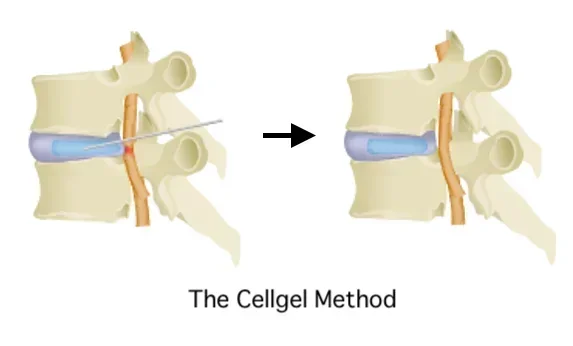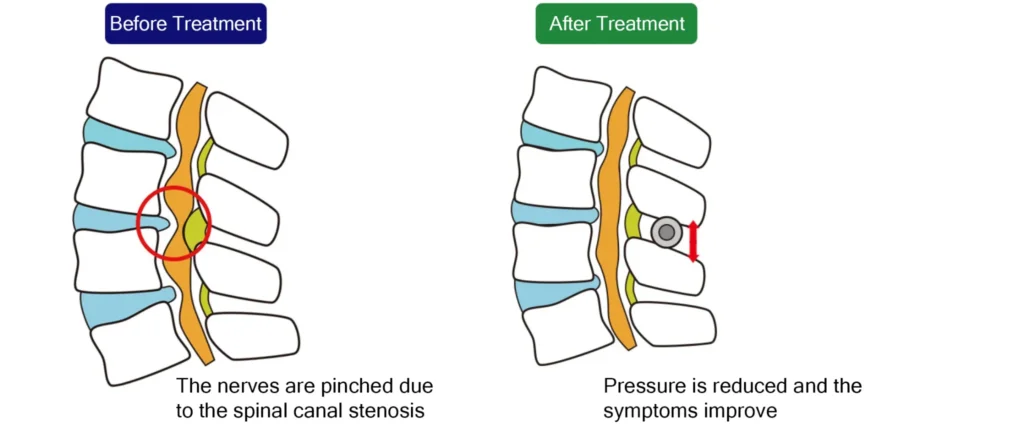November 20, 2025
Spondylolisthesis is a condition where a vertebra slips or shifts forward over the vertebra beneath it due to abnormalities in the vertebral joints (facet joints) or the intervertebral discs.
If you are diagnosed with lumbar spondylolisthesis, you may experience symptoms such as low back pain, buttock pain, and lower limb pain and numbness.
Long-distance driving can potentially aggravate these symptoms.
Here are the precautions you should take during long drives.
Why Long-Distance Driving Requires Extra Caution With Spondylolisthesis
Long-distance driving, much like desk work, involves maintaining the same posture for extended periods. Prolonged sitting increases the load on the lumbar spine and can easily aggravate symptoms.
Remaining in one position also stiffens the muscles and reduces blood flow. When the deep stabilizing muscles of the lower back stop working effectively, spinal stability decreases, leading to more discomfort.
Additionally, Prolonged driving also exposes the spine to constant vibrations caused by the road surface, which adds stress and can easily cause pain to appear during long drives.
Strategies to Prevent Back Pain from Aggravating
To keep symptoms from worsening, it’s important to maintain the proper posture in order to prevent anterolisthesis (forward slippage of the vertebrae) and to take regular breaks.

Sitting Strategies That Minimizes Strain on the Lower Back
◎ Proper Driving Posture
Correct Driving Posture: Adjust the seat so the backrest is not too upright. Ensure there is no gap between your lower back and the seat. Adjust the seat forward so your elbows are not fully extended.
◎ Lumbar Support
Placing a cushion between your lower back and the seat can significantly reduce lumbar strain.
Take Frequent Breaks
Avoid driving continuously without regular breaks.
It is recommended to take a short break every 60 to 90 minutes, get out of the car, and move your body gently.
During breaks, avoid excessive backward bending or twisting of the lower back. Incorporating light, low impact stretches or exercises is highly recommended.
Other Helpful Tips
◎ Use a Back Brace
Wearing a corset or support belt while driving can help reduce stress on the lumbar vertebrae.
◎ Stay Hydrated
Dehydration during driving can contribute to muscle stiffness and poor circulation.
◎ Keep Your Body Warm
Cold muscles tense up more easily, which can increase pain. Keep your body warm while driving. Take steps to ensure your body stays warm while driving.
Our Clinic’s Treatments Options
The Cellgel Method
Recent research suggest that disc degeneration is a contributing factor in the development of spondylolisthesis (*1).
Therefore, addressing disc degeneration is essential for preventing further slippage. At our clinic, we perform the Cellgel Method on cases where disc degeneration is the underlying cause.
In this treatment, a medical gel is injected into the cracked area of the disc.
It fills and reinforces the damaged portion, acting as a gel-like implant that remains in the disc after treatment—without reducing disc volume.
This allows for true disc preservation, offering a more fundamental treatment approach.
Unlike conventional surgery, the Cellgel Method is performed without incisions, resulting in fewer post-operative risks.

Learn more about the Cellgel Method
(*1): I. Akkawi, H. Zmerly. Degenerative Spondylolisthesis: A Narrative Review. Acta Biomedica, vol. 92, No.6, 2021.
The Florence & Q-Florence Methods
The Florence and Q-Florence methods are both low risk minimally invasive treatments.
A device is inserted percutaneously under local anesthesia and sedation to widen the narrowed spinal canal.
The device helps stabilize the vertebrae while preserving rotation and flexion, reducing disc protrusion and ligament thickening. By widening the narrowed spinal canal, pain is instantly relieved.

Learn more about the Florence Method
Learn more about the Q-Florence Method (article in Japanese)
If you have been diagnosed with spondylolisthesis, please consider scheduling a consultation with us.
Related Articles
Is it Spondylolisthesis? How to Check if You Have The Symptoms
What Causes Lumbar Spondylolisthesis? People Who Lead This Kind of Lifestyle Should Exercise Caution
The Daily Movements and Exercises That You Should NEVER Do if You Have Lumbar Spondylolisthesis
A must Do for Patients with Spondylolisthesis: Simple Stretches that Relieve the Pain
Management Strategies for Spondylolisthesis Based on Symptoms
Do Corsets Work for Spondylolisthesis? Recommended Corset Types and How to Use Them Effectively



